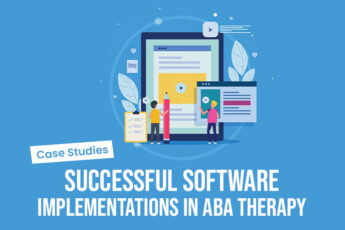In the ever-evolving field of Applied Behavior Analysis (ABA), practitioners are constantly seeking ways to optimize their time and resources to provide the best possible care for their clients. One transformative solution that has gained prominence is ABA scheduling software. This powerful tool enhances organizational efficiency. Also, it allows practitioners to focus more on what matters most – delivering high-quality interventions. In this blog, we will explore five ways ABA scheduling software can save you precious hours and contribute to a more effective and streamlined practice.
Automated Scheduling and Appointment Reminders:
One of the primary benefits of ABA scheduling software is the ability to automate the scheduling process. Gone are the days of manually coordinating appointments, juggling therapist availability, and ensuring optimal client coverage. ABA scheduling software takes on these tasks, factoring in various parameters. These include therapist expertise, location, and client preferences to create an optimized schedule. This not only saves time but also minimizes the chances of human error.
Moreover, automated appointment reminders significantly reduce the likelihood of no-shows or last-minute cancellations. By sending timely reminders to both clients and therapists, the software helps maintain a consistent schedule and ensures that sessions are maximally utilized. This feature not only saves valuable therapist time but also contributes to a more reliable and efficient practice.
Real-Time Communication and Collaboration in ABA Scheduling Software:

Efficient communication is vital in any ABA practice. ABA scheduling software facilitates real-time communication and collaboration among team members, therapists, and clients. Through a centralized platform, everyone involved in a client’s care can access up-to-date information about schedules, progress, and any changes in treatment plans.
This real-time communication feature minimizes the need for lengthy email threads, phone calls, or face-to-face meetings to coordinate schedules or discuss client progress. Therapists can quickly share updates, notes, and important information within the software, fostering a collaborative and responsive environment. This not only saves time but also ensures that all team members are well-informed, leading to more coordinated and effective interventions.
Data Collection and Analysis:
ABA practices rely heavily on data collection to monitor client progress and adjust interventions accordingly. ABA scheduling software often includes integrated data collection tools, allowing therapists to input and analyze data directly within the platform. This eliminates the need for separate data entry systems, reducing the risk of errors and saving considerable time.
The software can generate comprehensive reports and visualizations. Thus, providing practitioners with valuable insights into client outcomes, session attendance, and overall program effectiveness. With streamlined data collection and analysis, therapists can spend less time on administrative tasks and more time focusing on refining interventions based on real-time information.
Billing and Invoicing Automation in ABA Scheduling Software:
Managing billing and invoicing processes can be time-consuming and prone to errors if done manually. ABA scheduling software typically includes features for automating billing and invoicing tasks. By integrating client sessions and attendance data, the software can generate accurate invoices, saving practitioners hours of tedious administrative work.
Automated billing systems also help ensure that practitioners are properly compensated for their services. With the ability to track session attendance and generate invoices promptly, ABA practices can streamline their financial workflows, reduce billing errors, and improve overall revenue management.
Resource Allocation Optimization:
Optimizing resource allocation is crucial for a successful ABA practice. ABA scheduling software takes into account therapist availability, client needs, and geographical locations to create efficient schedules that maximize therapist utilization. This ensures that therapists spend more time providing interventions and less time on travel or idle periods between sessions.
By analyzing historical data and patterns, the software can also help identify peak demand periods, enabling practices to allocate resources more effectively. This proactive approach to resource management not only saves time but also enhances overall practice efficiency. Thus, allowing ABA practitioners to serve more clients without compromising on the quality of care.
Conclusion:
In the fast-paced world of Applied Behavior Analysis, practitioners face numerous challenges. ABA scheduling software emerges as a valuable ally in overcoming these challenges. It is by streamlining administrative processes, enhancing communication, and optimizing resource allocation. By automating scheduling, data collection, billing, and more, this software allows ABA practitioners to focus on what truly matters. Thus, delivering high-quality and evidence-based interventions. As the field continues to evolve, embracing technological solutions like ABA scheduling software becomes not just a convenience but a strategic imperative for practitioners committed to maximizing their impact and efficiency.
Talk to our experts and find out more about the latest healthcare technologies. See how the DIBS team can help you improve communication and coordination between healthcare systems, streamline workflows, and enhance patient care.







Leave a Comment